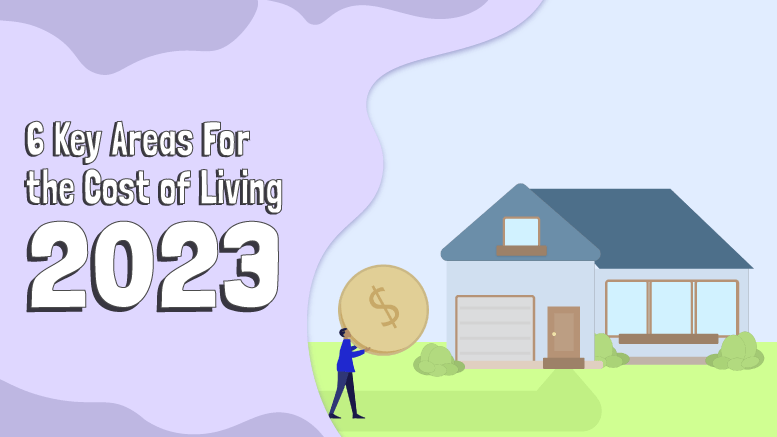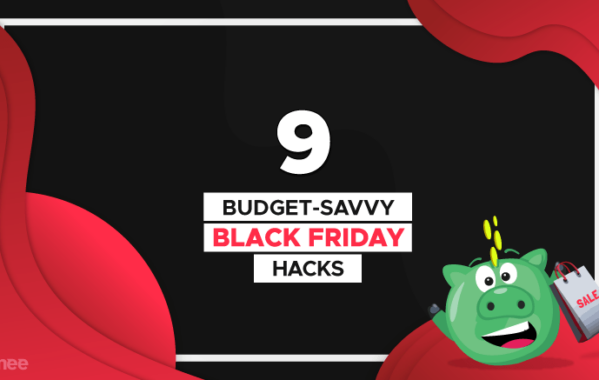6 Key Areas For the Cost of Living (2023)

Ah, the cost of living. A single use of the phrase alone can be enough to make even the most financially savvy people break out in a cold sweat. But fear not, Captain Best-Blog-Ever (definitely not a biased description…) is here to save the day! For today we’re flying headfirst into the belly of the beast by honing in on the 6 key areas that you should consider for the cost of living.
And don’t worry, we think you’ll come out the other end with a fresh view on things, and of course… a sweat-less body!
Rent & Utilities:
You’ll also need to pay for utilities such as electricity, gas, water, internet, and cable TV. These expenses can add up quickly, especially if you live in an area with high utility costs.
Step 1:
Research rental prices in your desired location: Look online or visit real estate agencies to get an idea of what rental prices are like in your desired location. Consider factors such as the size of the apartment, its location, and its amenities.
Calculate your monthly budget and determine how much you can afford to spend on rent: Take into account your income, your other expenses, and any savings you may have. This will help you determine how much you can afford to spend on rent each month without breaking the bank.
Step 2:
Determine which utilities are necessary for your lifestyle: Decide which utilities you’ll need to pay for, such as electricity, gas, water, internet, and cable TV. Determine which ones are necessary and which ones you can do without.
Budget for these expenses and ensure that you’re able to pay them each month: Once you know how much each utility will cost, add them up and factor them into your monthly budget. Make sure you’re able to pay for them each month and have enough money left over for other expenses.
Transportation:
If you own a car, you’ll need to budget for gas, maintenance, and insurance. If you rely on public transportation, you’ll need to budget for fares.
Step 1:
Determine your transportation needs: Decide how you’ll get around, whether it’s by car, public transportation, or other means. Consider the cost of each option and decide which one is most affordable for you.
Step 2:
Research transportation costs: Look online or contact transportation providers to find out how much it will cost to get around. Take into account gas, maintenance, insurance, fares, or other related costs.
Budget for these expenses and ensure that you’re able to pay them each month: Once you know how much transportation will cost, add it to your monthly budget. Make sure you’re able to pay for it each month and have enough money left over for other expenses.
Furniture & Household Items:
When you move into your own place, you’ll likely need to purchase furniture, appliances, and other household items. These expenses can add up quickly, especially if you’re starting from scratch.
Step 1:
Determine what you need: Make a list of the furniture and household items you need for your new place. Consider factors such as your living space, your lifestyle, and your budget.
Step 2:
Research prices: Look online or visit stores to get an idea of how much each item will cost. Take into account any delivery or setup fees.
Budget for these expenses and ensure that you’re able to pay them: Once you know how much each item will cost, add it up and factor it into your monthly budget. Decide which items you can afford to buy now and which ones you can wait to buy later.
Insurance:
You may need to purchase renters insurance to protect your belongings in case of theft or damage.
Step 1:
Determine what insurance you need: Consider getting renters insurance or other types of insurance to protect your belongings and yourself from potential losses or damages.
Step 2:
Research insurance companies and policies: Look online or contact insurance providers to compare policies, coverage, and costs. Take into account your needs and budget.
Budget for insurance premiums and ensure that you’re able to pay them each month: Once you’ve chosen an insurance policy, add the premiums to your monthly budget. Make sure you’re able to pay for them each month and have enough money left over for other expenses.
Personal Expenses:
You’ll need to budget for personal expenses such as clothing, entertainment, and any other hobbies or activities you enjoy.
Step 1:
Determine your personal expenses: Make a list of your personal expenses, such as clothing, entertainment, and hobbies. Estimate how much you’ll need to spend on each one per month.
Step 2:
Prioritize your expenses: Decide which expenses are most important to you and which ones you can do without if necessary.
Budget for these expenses and ensure that you’re able to pay them each month: Once you’ve determined your personal expenses and priorities, add them to your monthly budget. Make sure you’re able to pay for them each month and have enough money left over for other expenses.
Food:
You’ll need to budget for groceries, as well as any eating out you do. It’s easy to overspend on food if you’re not careful, so it’s important to make a budget and stick to it.
Step 1:
Determine your food needs and preferences: Decide how much you’ll need to spend on groceries each week or month. Take into account your dietary needs and preferences, as well as any eating out you may want to do.
Step 2:
Plan your meals and make a grocery list: Plan your meals for the week or month and make a grocery list based on what you’ll need. Stick to your list when you go shopping to avoid overspending.
Track your food expenses: Keep track of how much you spend on food each week or month. This will help you stay within your budget and adjust it if necessary.




